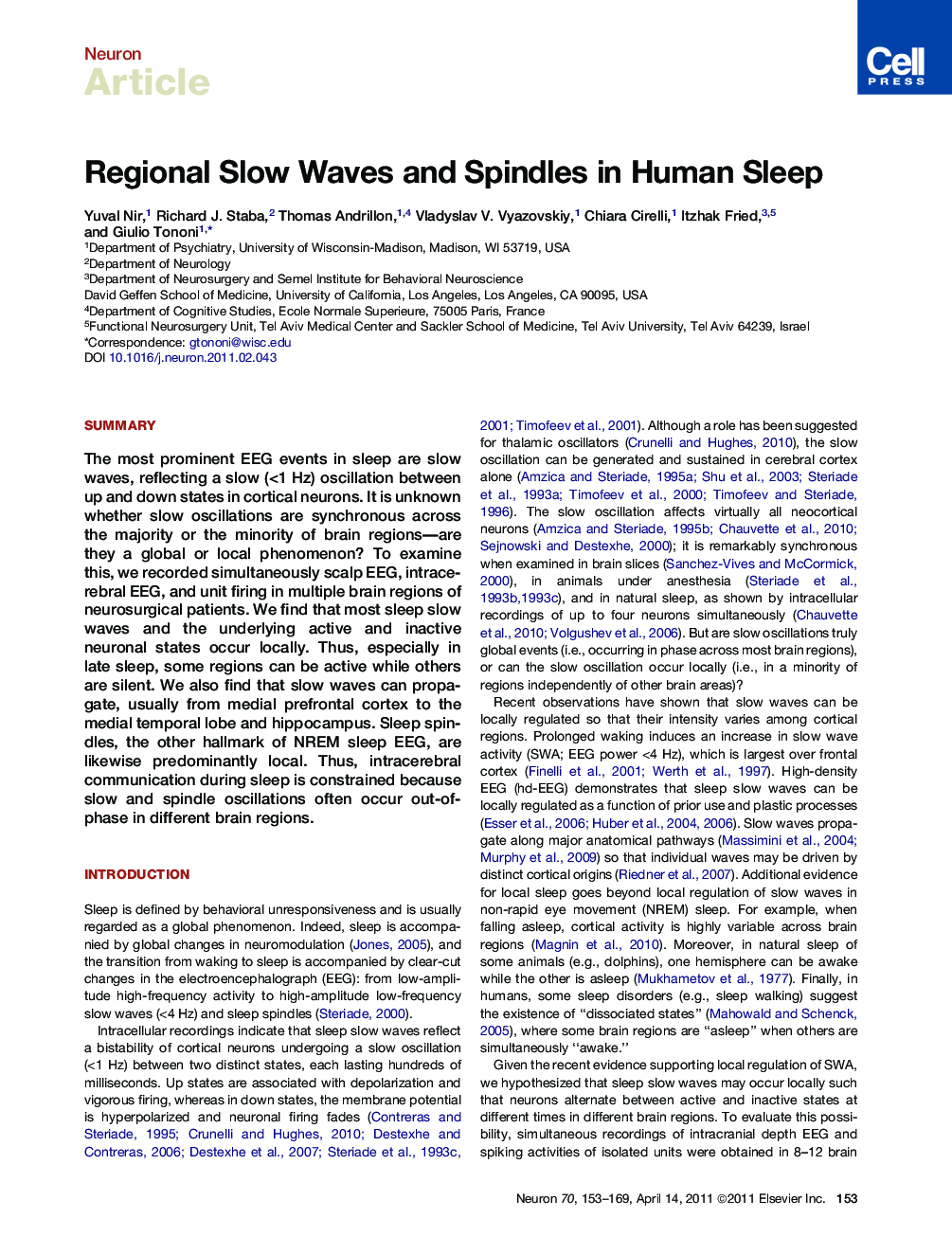| Article ID | Journal | Published Year | Pages | File Type |
|---|---|---|---|---|
| 4321688 | Neuron | 2011 | 17 Pages |
SummaryThe most prominent EEG events in sleep are slow waves, reflecting a slow (<1 Hz) oscillation between up and down states in cortical neurons. It is unknown whether slow oscillations are synchronous across the majority or the minority of brain regions—are they a global or local phenomenon? To examine this, we recorded simultaneously scalp EEG, intracerebral EEG, and unit firing in multiple brain regions of neurosurgical patients. We find that most sleep slow waves and the underlying active and inactive neuronal states occur locally. Thus, especially in late sleep, some regions can be active while others are silent. We also find that slow waves can propagate, usually from medial prefrontal cortex to the medial temporal lobe and hippocampus. Sleep spindles, the other hallmark of NREM sleep EEG, are likewise predominantly local. Thus, intracerebral communication during sleep is constrained because slow and spindle oscillations often occur out-of-phase in different brain regions.Video Abstract To view the video inline, enable JavaScript on your browser. However, you can download and view the video
